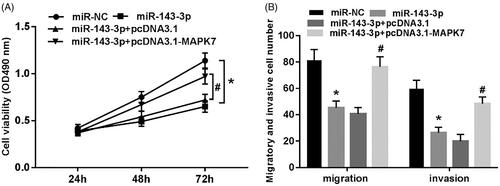Figures & data
Table 1. Primers and sequences of qRT-PCR.
Figure 1. Expression of MAPK7 and miR-143-3p in U2OS cells. (A) The expression of miR-143-3p mRNA in U2OS and hFOB1.19 cells; (B) the expression of MAPK7 mRNA in U2OS and hFOB1.19 cells; (C) the detection of MAPK7 protein expression; (D) the MAPK7 protein in U2OS and expression levels in hFOB 1.19 cells. Compared with hFOB1.19 cells, *p < .05.
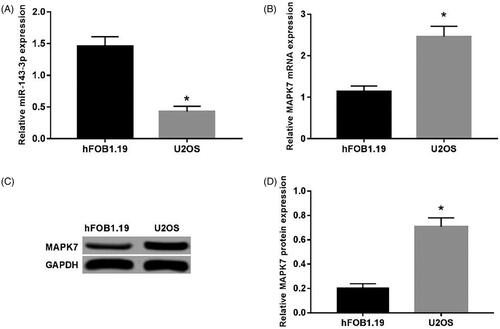
Figure 2. Effect of overexpression of miR-143-3p on proliferation of U2OS cells. (A) The expression of miR-143-3p in U2OS cells after transfection of miR-143-3p mimics; (B) the detection of U2OS cell viability after overexpression of miR-143-3p. Compared with the miR-NC group, *p < .05.
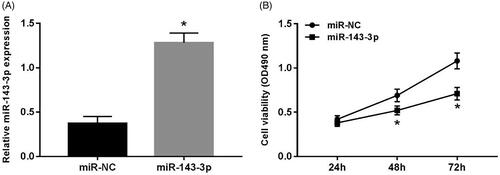
Figure 3. Effect of overexpression of miR-143-3p on migration and invasion of U2OS cells. (A) The cell migration and invasion assay; (B) the migration of U2OS cells after overexpression of miR-143-3p; (C) the invasion of U2OS cells after overexpression of miR-143-3p mimics. Compared with the miR-NC group, *p < .05.
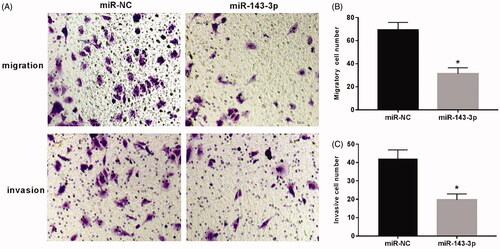
Figure 4. Knockdown of MAPK7 inhibits U2OS cell proliferation, migration and invasion. (A) The detection of MAPK7 protein expression; (B) the expression level of MAPK7 protein; (C) the detection of U2OS cell viability by knockdown MAPK7; (D) the migration and invasion detection of U2OS cells after knockdown of MAPK7. Compared with the si-NC group, *p < .05.
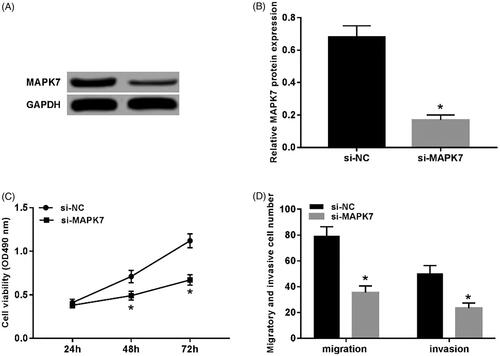
Figure 5. MiR-143-3p can target MAPK7 protein expression. (A) The complement of MAPK7 3′UTR and miR-143-3p; (B) the detection of luciferase activity; (C) the detection of MAPK7 protein expression; (D) the expression of MAPK7 protein by miR-143-3p. Compared with the miR-NC group, *p < .05; compared with the anti-miR-NC group, #p < .05.
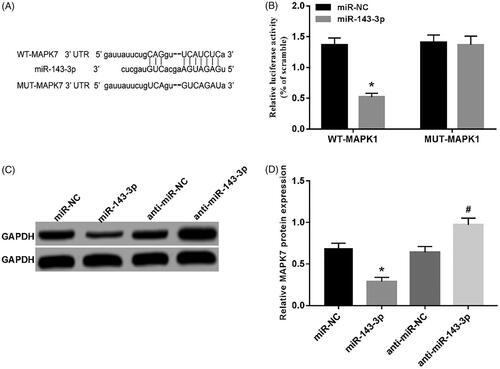
Figure 6. Overexpression of MAPK7 reverses the inhibitory effect of miR-143-3p on proliferation, migration and invasion of U2OS cells. (A) The cell viability test of each group; (B) the cell migration and invasion test of each group. Compared with miR-NC group, *p < .05; compared with miR-143-3p + pcDNA3.1 group, #p < .05.
